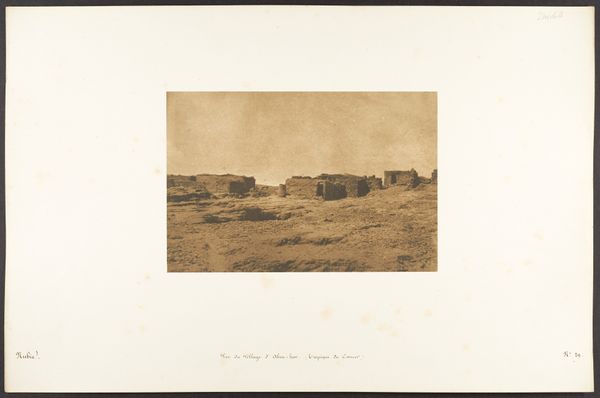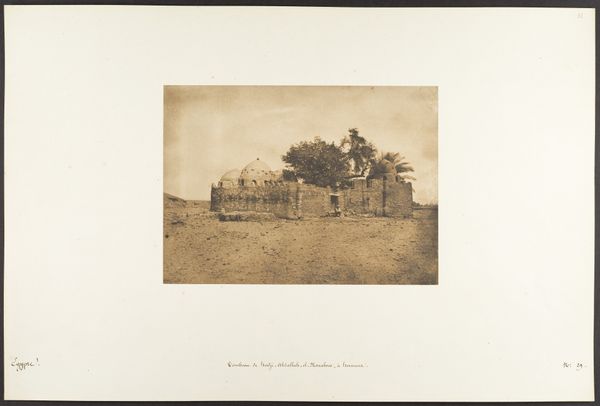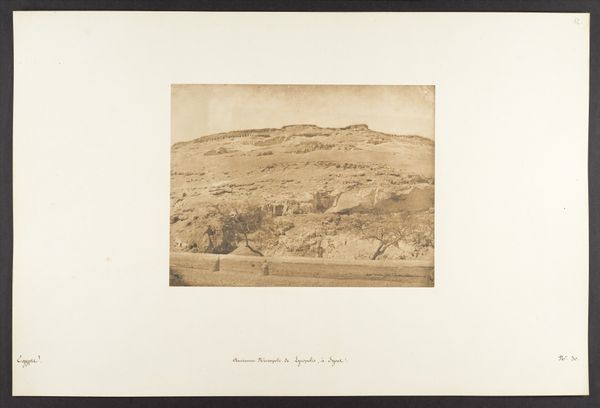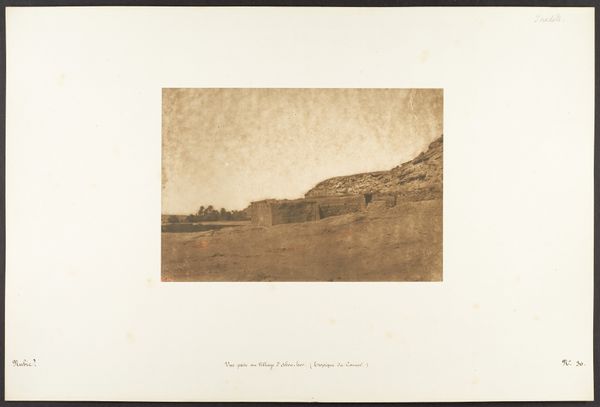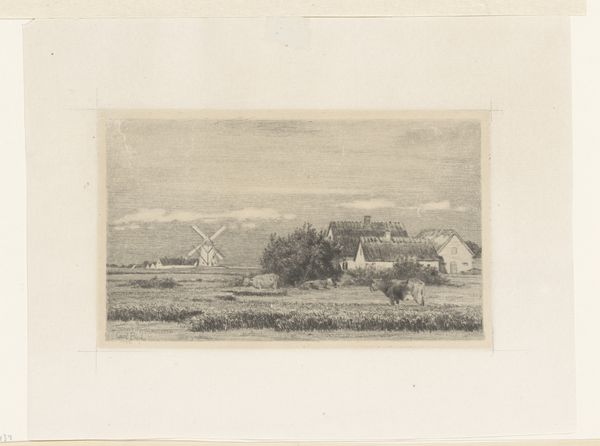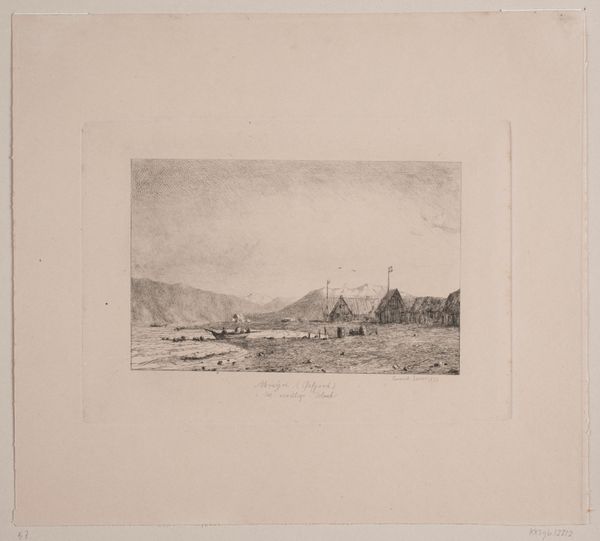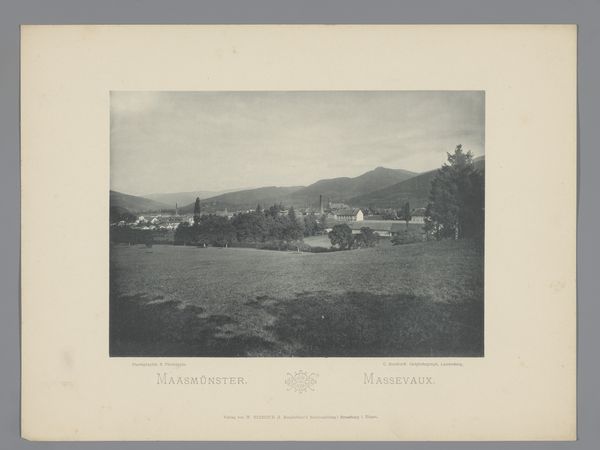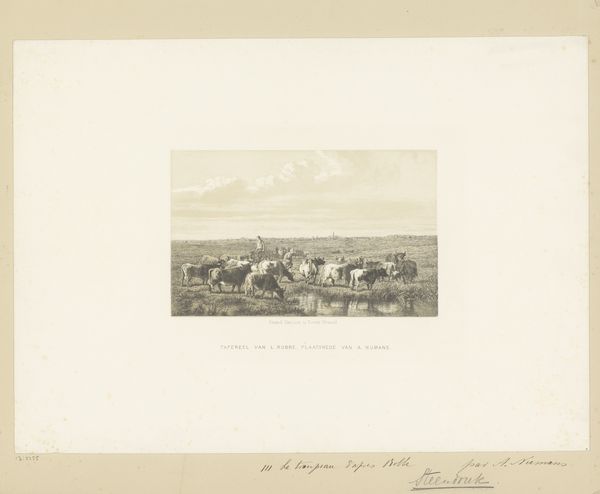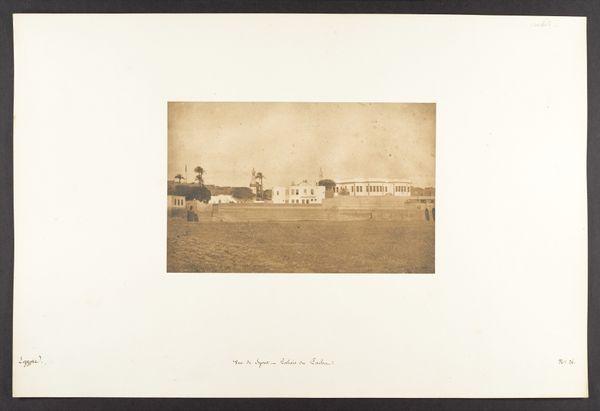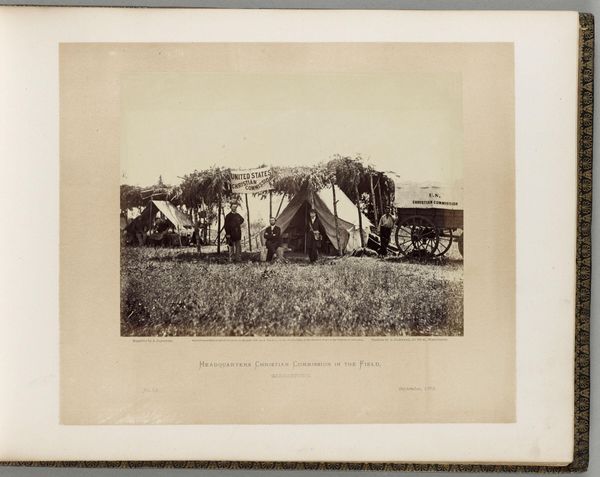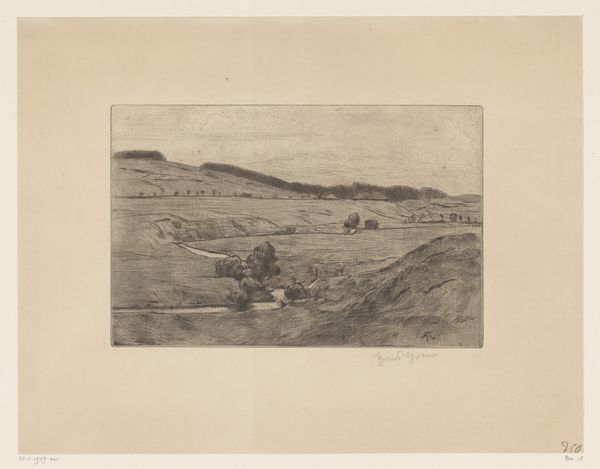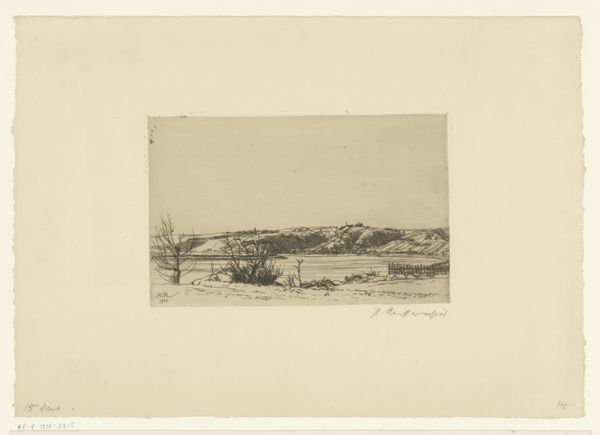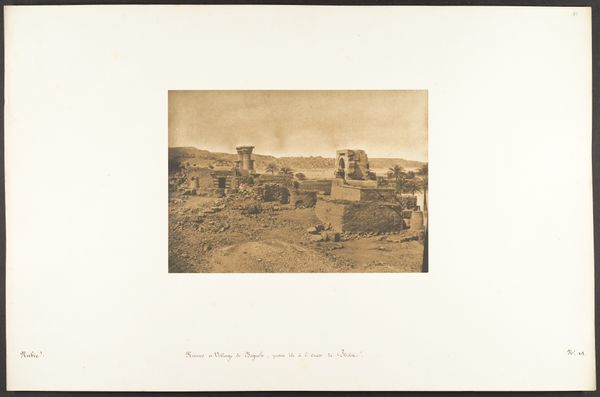
Vue générale de Médinet-habou, prise de l'Est (Thèbes) 1849 - 1850
0:00
0:00
photography, albumen-print, architecture
#
landscape
#
ancient-egyptian-art
#
photography
#
albumen-print
#
architecture
Dimensions: Image: 6 7/16 × 8 1/16 in. (16.3 × 20.4 cm) Mount: 12 5/16 × 18 11/16 in. (31.2 × 47.5 cm)
Copyright: Public Domain
Curator: Standing before us, we have Maxime Du Camp’s photograph, “Vue générale de Médinet-habou, prise de l'Est (Thèbes),” created between 1849 and 1850, an albumen print currently housed at The Metropolitan Museum of Art. Editor: The mood is decidedly desolate. A broad expanse of what seems to be scorched earth leads to massive architectural remains – an interplay of monumental form against an almost barren background. Curator: The composition hinges on the juxtaposition of near and far, focusing the viewer’s eye on the geometric rigidity of the structures against the textured earth. Du Camp meticulously organizes space, the stark sunlight emphasizing planes and surfaces. The photograph almost performs a structural analysis. Editor: Indeed, but the structural rigidity masks a story of labor. I see the rough-hewn quality of the stone blocks and I think about the countless human hands that quarried, transported, and assembled them. Albumen prints are fragile and involve complex preparation—the laborers who supported early photographic expeditions deserve our attention. Curator: Your sensitivity is noted. However, observe the temple’s imposing silhouette, the subtle tonalities of the albumen print itself contribute a spectral quality. This imbues the structure with layers of history, allowing for deep phenomenological readings on presence, memory, and empire. Editor: And to consider the contemporary socio-political dimension: imagine the colonial gaze inherent in early photographs of Egypt. These weren’t objective records but rather instruments of power, visually possessing and cataloging another culture. The exoticised became consumable, marketable. Curator: The photograph is a complex visual artifact, reflecting a layered, multifaceted interplay between formal elements, subject, and historical context, inviting viewers to decode its structural syntax and decode the language. Editor: Considering the labor-intensive production, its materiality as an albumen print made through travel, cultural exchange, and, possibly, even exploitation adds deeper significance to its aesthetic composition. I believe that through these considerations of material, it enhances our understanding.
Comments
No comments
Be the first to comment and join the conversation on the ultimate creative platform.
